Wellington Regional Growth Framework FAQs
Frequently Asked Questions
19th August 2021
What is the Wellington Regional Growth Framework?
The Wellington Regional Growth Framework is a spatial plan that describes a long term (30+ year) vision for how the region will grow, change and respond to key urban development challenges and opportunities in a way that gets the best social, economic and environmental outcomes for the region. It sets a strategic and spatial direction for the region that will help guide and coordinate regional-scale urban planning and align investment in infrastructure and services.
Why have we developed the Framework?
The region is growing faster than it has done for many decades and is facing immediate and longer-term housing supply and affordability, urban development and infrastructure challenges that cross local and iwi boundaries. It is important that we take a region-wide approach and develop a partnership between central government, local government and mana whenua to respond to our region’s housing and urban development challenges and leverage its opportunities.
What geographic area does the Framework cover?
For the purpose of the Framework the region includes the territorial authorities of Masterton, Carterton, South Wairarapa, Upper Hutt, Lower Hutt, Wellington, Porirua, Kāpiti Coast and Horowhenua.
Horowhenua District has been included in the Wellington Regional Growth Framework because much of its housing and employment market now effectively functions as part of Wellington regional market for housing and jobs.
What are the benefits of a region-wide approach?
The challenges we face are regional, and many of these cross local council boundaries and are best dealt with together not individually. An enduring regional partnership between central government, local government (including Horowhenua District) and iwi will allow the partners to focus and align efforts to respond to these issues.
Who has been developing the Framework?
This project is a collaboration between central government, the councils of the region, including Horowhenua District and the Greater Wellington Regional Council and mana whenua.
What time period is covered by the Framework?
The Framework is a spatial plan for future growth in the region over the next 30+ years.
What process did we follow to develop the Framework?
Through engagement with iwi, council organisations, infrastructure providers and other stakeholders at workshops and other forums we first identified how regional growth could look in the future under different scenarios. This informed a number of urban development options which were subject to quantitative and qualitative analysis. The assessment led to an Emerging Spatial Direction for the region which has been further refined to become the Framework.
For more detail on the process we followed see https://wrgf.co.nz/wp-content/uploads/2020/09/WRGF-Options-Assessment-Report-Aug-2020.pdf PDF 969KB
What opportunities did stakeholders have for input into the Framework?
In developing the Framework we held many workshops with hundreds of people from across the region, including mayors and councillors, mana whenua and Māori stakeholder rōpū, technical experts, interest groups, industry organisations, government organisations and other stakeholders representing diverse economic, social and environmental interests from around the region.
We also held a public consultation process in early 2021.
Where are we at with the Framework?
The Framework has been signed off and on 1 July 2021 the Wellington Regional Leadership Committee approved the three-year work programme of the Framework
What are the next steps?
We are now implementing the Wellington Regional Growth Framework.
What are the objectives of the Framework?
The objectives sought from the Framework have been developed jointly by the project partners and reflect the particular needs for change in the region.
What are the key challenges identified in the Framework?
There are four key challenges we have identified and listed below. More detail on these can be found in the Foundation Report on the Wellington Regional Growth Framework website.
- The region lacks sufficient and affordable housing supply and choice, housing affordability is declining and a significant investment in infrastructure is needed to enable enough housing and quality urban environment.
- Many of the urban areas in the region are vulnerable to the impacts of natural hazards and climate change, and as the region grows and becomes more densely settled, it will become increasingly important to improve resilience and protect and enhance the region’s natural environment.
- There is inequitable access to social, educational, and economic opportunities across the region.
- Mana whenua and Māori in the region have poor access to affordable housing choices.
What are the 'key moves' identified in the Framework?
There are six big things or key moves we can undertake to make a big difference in this region. These have been identified as:
- Harness growth to make the region’s housing and urban areas more affordable and liveable and provide more housing choice – ‘walkable neighbourhoods’
- Make better use of the region’s limited supply of well-located greenfield land
- Fully unlock the urban development potential of current and future rapid transit orientated corridors particularly the Let’s Get Wellington Moving corridor
- Unlock new areas for housing and urban development and deliver greater regional resilience with a major west-east multi-modal corridor
- Deliver transformational housing and development outcomes for iwi/Māori
- Address the urban development challenges of climate change and transitioning to a zero-carbon economy at a regional scale.
How does the Framework link in with other policy?
The Framework will help the region deliver on the Government’s Urban Growth Agenda objectives and takes account of the requirements of the new National Policy Statement on Urban Development (although it has not been developed to fully meet the requirements of a Future Development Strategy). Going forward it will need to consider government policy work such as the Resource Management Act Review, the Three Waters Review and meet the requirements for a Future Development Strategy.
The diagram below provides an overview of how the Draft Framework and other documents fit together.

How does this fit with other work going on in the region?
The Framework takes into account work already underway in the region to accommodate growth. This includes work by councils such as spatial plans or district plan changes, work by central government agencies such as the Waka Kotahi’s mode shift planning and work by iwi such as the papakāinga housing and property development.
What population growth scenario have we used?
The current population of the Wellington-Horowhenua region is 578,100,
compared with 457,690 in 1996.
The Framework has been developed by considering:
- A growth scenario where there is a future regional population of 760,000. This is 200,000 people on top of the current population.
- An increase of 100,000 jobs in the 30-year period.
While there is no certainty about when, how or at what rate, the region’s population might reach this size, the draft Framework has been developed based on this scenario to give a better understanding of what would be required to accommodate this level of growth, and potential infrastructure needs.
It is important to note that this is not a policy target.
How will the Framework be implemented?
Delivering the Framework requires a level of enduring partnership between and within local government, iwi and central government not seen on this scale in the region before. The partnership includes governing the Framework and working together to plan, fund and deliver the key initiatives and projects identified.
How frequently will the Framework be reviewed and updated?
The frequency of review will differ going forward based on circumstances. However, we do know that the region will need to update this Framework to include additional information by June 2023 to comply with the need to produce a Future Development Strategy as required by the National Policy Statement on Urban Development. We are also watching to see requirements
under the governments proposed Strategic Planning Act as part of the review of the Resource Management Act (RMA).
Tier 1 councils in the region (Wellington, Hutt, Upper Hutt, Porirua cities, Kapiti Coast District and Greater Wellington) are required to prepare a full Future Development Strategy to inform their 2024-2034 Long Term Plans.
How can I get a copy of the Framework?
You can view and download a copy of the Framework here
How do I find out more?
If you want to delve into the Wellington Regional Growth Framework in more detail or read up some more about the project and reports check out the Reports section of this website.
Further information on the context and the key challenges we identified can be found in our Foundation Report
Sign up for updates.
Quick Links


